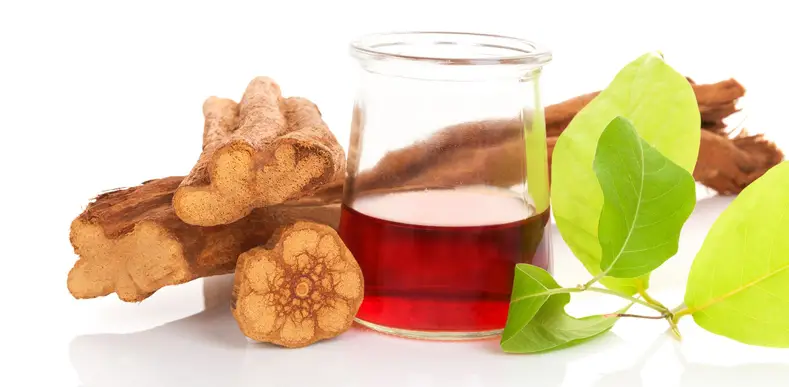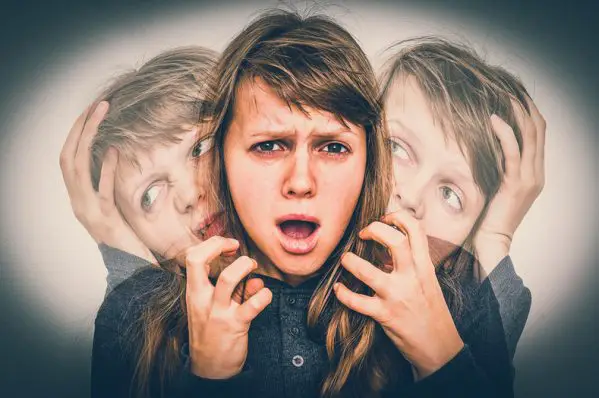Understanding DMT Addiction

With substance use disorders at an all-time high in the United States and with new substances seemingly surfacing daily, it is critical to be as well-informed as possible to protect you and your loved ones from the ravages of substance misuse. One substance that has been on the rise in the past years may appear as a harmless trip, but there is much more to it than meets the eye.
What is DMT?
Dimethyltryptamine, or DMT, is a naturally occurring hallucinogenic substance in plants that has been in existence for thousands of years. DMT was even used in South American shaman rituals, giving it its psychedelic nickname of the “spirit molecule”. The surreal hallucinations and psychedelic effects that go along with DMT come from the impact the substance has on the serotonin levels in the brain.
DMT is classified in the United States as a Schedule 1 controlled substance. A Schedule 1 substance is defined by the Drug Enforcement Agency, or DEA, as “drugs, substances, or chemicals with no currently accepted medical use and a high potential for abuse“. This means that DMT puts its user at high risk for substance abuse.
How is DMT Abused?
Over 98% of people who reported trying DMT said that they had tried smoking its synthetic powder form. The next most common form of DMT use was in the form of ayahuasca, with 30% of people saying that they had used it in that form. When DMT is available as a white crystalline powder, people also try snorting or injecting it. Eating the powder doesn’t work, however. DMT is quickly metabolized by enzymes in the digestive tract and so when it is eaten as a pure substance it doesn’t remain in the body long enough to produce effects. Ayahuasca works because the drink contains other compounds that block the enzymes. As a result, the DMT is metabolized slower and it quickly affects the brain.
Hallucinogens work by interacting with and activating serotonin receptors in the brain. In particular, these substances change the brain chemistry of the prefrontal cortex and other regions that play a role in mood, perception, and the body’s responses to stress.
There is some evidence that certain hallucinogens might be able to help treat mental health disorders. A drug very similar to ketamine is sometimes given to patients with severe depression, and clinical trials are underway to determine whether psilocybin may also help with depression. It is not clear that DMT might have these same benefits, although some people resort to DMT abuse because they think it can help cure their mental health problems. It is important to know that there isn’t solid evidence yet that DMT can help in this way, and in some situations having a co-occurring mental health problem can make people more likely to develop a substance use disorder.
Effects of DMT Use
DMT has a potentially massive impact on your mental and physical health in both the short-term and the long-term. After ingestion, short-term effects can be seen in as little as twenty minutes and last up to twelve hours. DMT use can produce these effects and more:
- Hallucinations: These hallucinations are known to involve the user being in an environment dramatically and drastically different than their reality. This could lend itself to the user believing they have experienced such intense experiences as a near-death moment or an encounter of the fourth kind.
- Accelerated Heart Rate: The user’s heart rate when engaging in DMT use will increase as a response to the substance as well as a response to the intense hallucinations that follow.
- Increased State of Agitation: The heightened tactile sensations and awareness that go along with DMT use increase the state of agitation in the user.

Long-term effects of DMT use follow the standard for most hallucinogenic substances, including:
- Persistent State of Psychosis: DMT use can cause the state of psychosis to persist within the user with or without the active presence of DMT. Disturbances to mood, vision and mental process (including paranoia) can become evident.
- Hallucinogenic Persisting Perception Disorder: HPPD creates a state of hallucinating throughout everyday life for the user. In addition to hallucinating, the user can even develop symptoms that can mimic such severe medical states as a tumor in the brain or sustaining a stroke.
DMT use is not known to induce tolerance in the user. However, that does not mean that the dangers of DMT use are any less palpable.
DMT Facts and Statistics
DMT use may be on the rise. One 2014 study found that more drug users had recently tried this drug than any other. Across the world, nearly 9% of people who responded to a drug-use survey said that they had tried DMT within their lifetime. Within the United States, less than 1% of people reported having tried the drug in 2013, although 2.3% of people ages 18 to 25 reported using it, making this the age range with the highest amount of DMT use. Additionally, more men than women said that they had tried DMT.
DMT Trends in Oregon and Washington
DMT is a Schedule I substance in the United States, which means that there is no accepted medical use for the drug and it has a high chance of being abused. However, in 2016, the United States’ first public ayahuasca church was opened in Washington. This organization offered ayahuasca retreats and allowed people to try the drink as a part of religious ceremonies. Although this church initially claimed they were operating legally under religious protection laws, within a few months after opening they indefinitely postponed their retreats and have not yet resumed them.
DMT Addiction Treatment
If you are currently using DMT, do not hesitate to reach out to professionals for help. Nicknames for DMT like “spirit molecule” and “forty-five-minute psychosis” do not properly illustrate the physical and mental dangers DMT use can inflict. Contact The Recovery Village Ridgefield today to learn about treatment options.
Sources
Cakic, Vince; Potkonyak, Jacob; Marshall, Alex. “Dimethyltryptamine (DMT): subjective effects and patterns of use among Australian recreational users.” Drug and Alcohol Dependence, September 1, 2010. Accessed August 14, 2019.
Drug Enforcement Administration. “N,N-DIMETHYLTRYPTAMINE.” July 2019. Accessed August 14, 2019.
National Institute on Drug Abuse. “How Do Hallucinogens (LSD, Psilocybin, Peyote, DMT, and Ayahuasca) Affect the Brain and Body?” February 2015. Accessed August 14, 2019.
National Institute on Drug Abuse. “Hallucinogens.” April 2019. Accessed August 14, 2019.
Winstock, Adam R.; Kaar, Stephen; Borschmann, Rohan. “Dimethyltryptamine (DMT): prevalence, user characteristics and abuse liability in a large global sample.” Journal of Psychopharmacology, January 2014. Accessed August 14, 2019.
National Survey on Drug Use and Health. “Results from the 2013 National Survey on Drug Use and Health: Detailed Tables.” 2013. Accessed August 14, 2019.
View Sources
Cakic, Vince; Potkonyak, Jacob; Marshall, Alex. “Dimethyltryptamine (DMT): subjective effects and patterns of use among Australian recreational users.” Drug and Alcohol Dependence, September 1, 2010. Accessed August 14, 2019.
Drug Enforcement Administration. “N,N-DIMETHYLTRYPTAMINE.” July 2019. Accessed August 14, 2019.
National Institute on Drug Abuse. “How Do Hallucinogens (LSD, Psilocybin, Peyote, DMT, and Ayahuasca) Affect the Brain and Body?” February 2015. Accessed August 14, 2019.
National Institute on Drug Abuse. “Hallucinogens.” April 2019. Accessed August 14, 2019.
Winstock, Adam R.; Kaar, Stephen; Borschmann, Rohan. “Dimethyltryptamine (DMT): prevalence, user characteristics and abuse liability in a large global sample.” Journal of Psychopharmacology, January 2014. Accessed August 14, 2019.
National Survey on Drug Use and Health. “Results from the 2013 National Survey on Drug Use and Health: Detailed Tables.” 2013. Accessed August 14, 2019.

 Insurance
Insurance About Us
About Us Our Facility
Our Facility Admissions
Admissions Programs
Programs Medical Detox
Medical Detox Inpatient Rehab
Inpatient Rehab Aftercare & Recovery
Aftercare & Recovery

